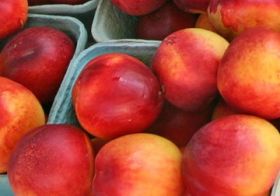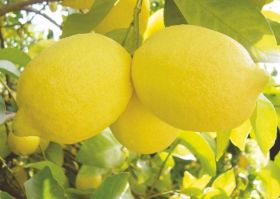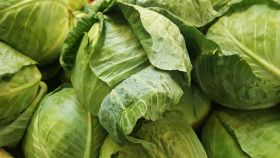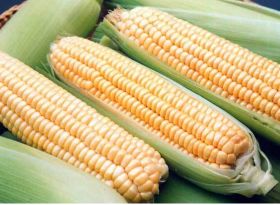
The FPJ Big 50 Products ranks the 50 best-selling fresh fruit and vegetable products by sales value, using Kantar Worldpanel data for the 52 w/e 20 May 2018.
26. Nectarines
Value: £109.3m Volume: 60.6m kg (+3.7%)

Lower prices bring more customers
Nectarines boast healthy stats this year after a poor season previously, but their encouraging sales data belies a difficult year for growers. Massive overproduction from Spain saw growers dumping much of the crop, resulting in lower prices, which in turn drove purchases. South African growers also had to overcome a difficult growing season with water still scarce.
Despite growers’ woes they remain a popular category with shoppers, ranking above peaches. “I think a lot of people now see nectarines as a better variety, without hair and tastier. It’s actually more consistent and it has a better shelf life, which tends to bring repeat buyers,” says Dan Masters, commercial manager at Norton Folgate.
Like other stonefruit, the category still feels itself in need of some reinvigoration however as netted punnets remain the dominant format, which aren’t attractive to top-up or first-time buyers. New varieties, such as the flat white nectarine developed by French company Regal’in could be an example of sweeter cultivars bringing life to the category.
This year the Spanish stonefruit industry uprooted approximately a fifth of its orchards, particularly poor-performing early varieties, which have resulted in price rises for producers, according to the co-operative SAT
Sintesis.
27. Lemons
Value: £99.1m (+3.1%) Volume: 52.4m (+8.8%)

Lower prices and drinks drive lemons
Lemons’ recent success continues to be driven by uptake in drinks – alcoholic and not – with trends for infusing them into water, popularised on social media, becoming more prevalent. But tradition has also helped their cause, with retail promotions for Pancake Day and Christmas benefiting the category.
According to Jo Mumford of AG Thames, shopper numbers have remained relatively static but the “households buying lemons are picking up more per shopping trip”. She adds: “Average prices per kilogram dropped by around six per cent to encourage supplementary purchasing.”
Supply has remained tight in recent years due to shortages from the southern hemisphere, but new plantings in Spain and South Africa will help meet demand, “with a number of new seedless and better-yielding varieties being planted,” adds Matthew Embrey, senior commercial manager at MMUK.
He says that global competition means the increase in production won’t necessarily result in better prices. “We can expect the UK to remain tight on volume over the next few years and this could have an impact on prices,” he explains, adding that customer preference “is shifting more towards pre-packs due to the increased consumption of lemons, which is also lifting the overall volume.”
28. Cabbage
Value: £95m (+3.4%) Volume: 79.1m kg (+2.4%)

Cabbage enjoys calm before the storm
As with other brassicas, cabbage sales were boosted by the wet, cold weather last year, with a rainy summer lending itself more to traditional meals than salads and barbecue food.
Another factor benefiting the category is the trend for healthy eating. “That might have increased sales a little, but I expect weather was the big factor,” says Greville Richards of Southern England Farms.
Next year, the Cornwall grower expects cabbage sales to be down considerably, with current returns down substantially on June and July last year. The ongoing spell of hot, dry weather is proving a major headache for brassica growers, and some are now questioning whether the ground is too dry to plant winter crops.
On a more positive note, Richards believes there is plenty of scope for innovation in the cabbage category, which has generally been quite static in this regard.
One thing the grower would like to see is a change to pack sizes in spring greens. “We’d like to see the spec reduced from a 500g bag to a 250-300g bag,” he says.
“There’s far too much giveaway, and the majority of families aren’t going to eat spring greens two nights in a row, so I think we should develop a pack that serves just one meal.”
29. Sweetcorn
Value: £92.2m (+7%) Volume: 30.3m kg (+5.8%)

Another sweet year for sweetcorn
For such a tall crop, sweetcorn used to be a smaller player in the fresh produce chain, but now it’s living up to its towering stature.
There is little more that can be said about sweetcorn’s success, such is its simplicity. Built on the popularity of restaurant chains like Nando’s as well as home barbecuing trends, sweetcorn has had another good year.
Weather also plays an important role, says Barfoots managing director Julian Marks, and this year has brought much the same: “The opportunities to enjoy food and drink outdoors over a sustained period, combined with England’s performances at the World Cup, have both contributed to the uplift.”
With a country that’s literally heating up, it’s not a surprise that year-on-year sales are matching year-on-year temperature increases. Going forward growers like Barfoots will innovate with new eye-catching varieties to keep consumer interest, with multi-coloured cobs likely to soon feature on supermarket shelves, as well as more plantings in the UK and abroad. These include locations such as Senegal, where Barfoots also grows, to help keep up with demand.
“The business will continue to explore ways to increase the crop available both through improved yields and a larger land base,” adds Marks.
30. Spring onions
Value: £88.8m (+5.4%) Volume: 21.6m kg (-1%)

Salad boosts spring onions after a slow start
Weather conditions this year have been both a blessing and a curse for the spring onion category. A wet, cold spring has delayed the season, with maincrop planting pushed back until 26 May at Northern Irish grower Gilfresh.
Now growers have the opposite problem, and drought conditions are taking their toll on the crop, but the hot, sunny weather is not all bad news. It is also driving demand for refreshing salad vegetables such as spring onions, with Gilfresh reporting a 29 per cent increase in volume sales compared to 2017.
“A lot of crops are four to five weeks behind and there are big concerns over yields and continuity of supply,” says Thomas McLaughlin, head of sales and marketing at Gilfresh, “but looking at the forecast we should be okay from now until the end of the season.”
McLaughlin expects the current rate of volume sales to fall back slightly in the coming weeks but he predicts that the season will close with an impressive sales rise of 20-25 per cent on last year – this despite the fact that sales last year were also quite strong. Some retailers carried both pre-packed and bunched product in 2017, he notes, while others switched entirely to bunches to avoid duplication.



